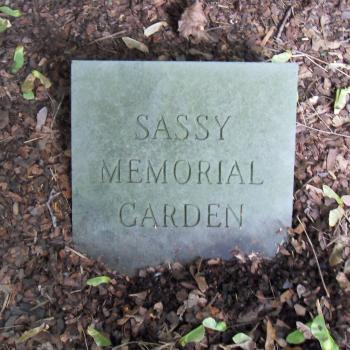 Another presidential campaign season is upon us, with all its ugly divisiveness and demonizing of politicians who don’t share one’s own views. How is a Christian to live out Jesus’ command to love one another (John 13:34) in such times?
Another presidential campaign season is upon us, with all its ugly divisiveness and demonizing of politicians who don’t share one’s own views. How is a Christian to live out Jesus’ command to love one another (John 13:34) in such times?
In the early 1980s, as a newly baptized Catholic, I plunged into a study of the spirituality of nonviolence. What pushed me was a pastoral letter issued by the U.S. Catholic Bishops in May, 1983: The Challenge of Peace: God’s Promise and Our Response, written in the context of the Cold War’s nuclear arms race. As a baby Catholic, I soaked in every word of the first official church document I’d read. What especially struck me, and with revelatory force, was the bishops’ assertion that nonviolence “best reflects the call of Jesus both to love and to justice.”
I’d heard of nonviolence, of course (Gandhi and Martin Luther King), but before my baptism I lived in such a self-enclosed world that I didn’t even read the newspaper. The bishops’ assertion moved me to learn about nonviolence. So I joined a group in my parish that was studying both Thomas Merton and Gandhi. I was immediately hooked.
Merton’s analysis of how we cling to self-protective fears to keep from obeying Christ’s command to truly love our enemies brought me to my knees in penitence; I knew guiltily how far I was from nonjudgmental love of my neighbors and friends, let alone my enemies.
And Gandhi’s notion of Satyagraha—that the strongest force in the universe is the force of love, which will conquer all hatred and injustice if we let its power rule in our own hearts—held a condemning mirror to all my petty hatreds and angers. Recognizing how little peace there was within myself, I felt my complicity in the violence of the world.
The bishops’ document persuaded me that the U.S. strategy of nuclear deterrence was an evil, so I joined my city’s nuclear freeze network. It was exciting to be, for the first time in my life, politically engaged. But, before long my studies of nonviolence posed a challenge.
For nuclear deterrence supporters, the threatening enemy was the Soviet Union, for those in the freeze movement, the threatening enemy was our own government and all who supported its nuclear arms build-up policy. My prayerful studies of nonviolence had been training me to raise a red flag in my heart whenever it cast an other as enemy, training me not to scorn the enemy but to try to enter his or her own heart non-judgmentally.
So I decided it was time to practice spiritual nonviolence in a concrete way. There was a man—I’ll call him Tom—who used to come to all our nuclear freeze public events deliberately to argue the opposing view: to hassle us, we’d say with an irritated sigh among ourselves. I decided to try to get to know him—as a human being just like me, rather than as The Hassler.
When I introduced myself to Tom at one of these events and said I wanted to understand his view better, he invited me to his home. It was in a neighborhood not unlike mine, but (symbolically) on the other side of the city. After introducing me to his wife and son, he took me into his study and gave me copies of magazine articles supporting his view.
I didn’t argue back. I listened with a heart aching to love him as I knew God did, a heart seeking to enter his own heart and become its very core. While disagreeing totally with his nuclear deterrence support, I sought to relinquish the image of him as enemy, to be able to accept in my soul that—despite our mutual fear of each other’s positions—he and I were one.
Only God knows how far I succeeded. I left Tom’s house with a splitting headache. This was the cost, for me, of trying to open my heart and mind: feeling my own fragile self split open with hammer and wedge to let in the feared other.
Did it take this much out of Whitman, I wonder now, to become each of the people he tenderly names in the famous “Song of Myself”?
The spinning-girl retreats and advances to the hum of the big wheel,
The farmer stoops by the bars of a Sunday and looks at the oats and rye,
The lunatic is carried at last to the asylum a confirmed case…
And these one and all tend inward to me, and I tend outward to them,
and such as it is to be of these more or less I am.
Ever since college, when I first encountered the wildly self-transcending vision of “Song of Myself,” I’ve returned to it. I long to share Whitman’s deep identification with all people in their precious individuality—Tom then, politicians who terrify me now.
I’m driven, like Greg Wolfe, writing in his editorial in the current issue of Image (72), “toward an inclusive vision that reconciles divided peoples and riven hearts.”
During our current agonizingly long and inherently divisive campaign season, can I watch TV news without mumbling scornfully at politicians I disagree with? Can I get through the elections with nonviolent love in my heart?
Let all tend inward to me, and I tend outward to them.
Peggy Rosenthal is director of Poetry Retreats and writes widely on poetry as a spiritual resource. Her books include Praying through Poetry: Hope for Violent Times(Franciscan Media), and The Poets’ Jesus (Oxford). SeeAmazon for full list. She also teaches an online course, “Poetry as a Spiritual Practice,” through Image’s Glen Online program.











